
staem被盗
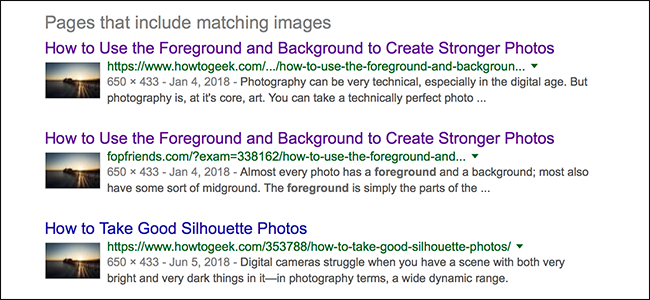
Photos and other images get stolen all the time online. Someone takes a photo from the photographer’s website or social media channels and uses it for their own needs. This is completely illegal and happens to me all the time here at How-To Geek.
照片和其他图像一直在线被盗。 有人从摄影师的网站或社交媒体渠道拍摄照片,并将其用于自己的需求。 这是完全违法的,我一直在这里出现在How-To Geek。
Let’s do a quick copyright law refresher. Unless the photographer signs away the copyright to their images or releases them into the public domain, they are the sole and automatic copyright holder. Using their images without their permission is copyright infringement unless you have a very specific “fair use” grounds for doing it—and trust me, you probably don’t. Just because an image is “freely available” on the internet, doesn’t mean you have the right to take it and use it.
让我们快速回顾一下版权法。 除非摄影师放弃其图像的版权或将其释放到公共领域,否则他们是唯一的自动版权持有者。 除非您有非常明确的“合理使用”依据,否则未经其许可使用其图像即会侵犯版权,并且相信我,您可能不会这样做。 仅仅因为图像可以在互联网上“免费获得”,并不意味着您有权使用和使用它。
Stealing images is super common, so how can you tell if a photo on a website has been taken from somewhere else? Let’s find out.
偷图片非常普遍,那么如何分辨网站上的照片是否是从其他地方拍摄的呢? 让我们找出答案。
检查版权数据 (Check for Copyright Data)
The simplest way to check if an image is being used without permission is to check if there’s any embedded copyright metadata. You can download the image and check using your operating system’s built-in tools, but it’s quicker and easier to use an online metadata viewer like Metapicz.
检查是否未经许可使用图像的最简单方法是检查是否有任何嵌入的版权元数据。 您可以下载图像并使用操作系统的内置工具进行检查,但是使用诸如Metapicz之类的在线元数据查看器更加便捷。
Right click on the image you want to check and click “Copy Image Address.” Note that the exact wording of that command might be different in different browsers, but you’ll find the command you’re after.
右键单击要检查的图像,然后单击“复制图像地址”。 请注意,在不同的浏览器中,该命令的确切措词可能有所不同,但是您会找到所需的命令。
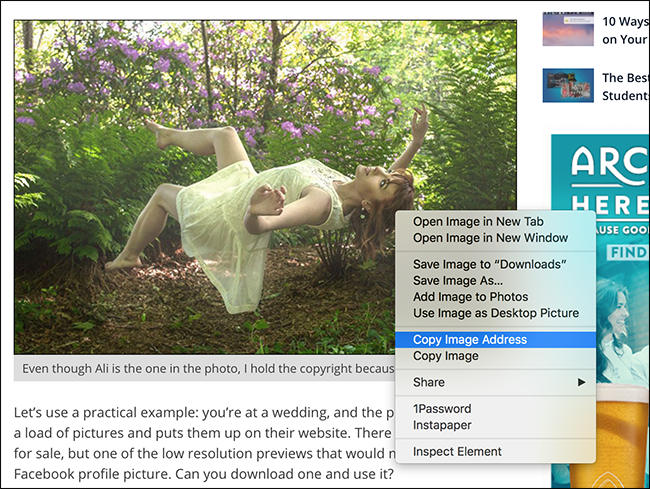
Head to Metapicz, paste in the URL you copied, and click the “Go” button.
转到Metapicz,粘贴您复制的URL,然后单击“开始”按钮。
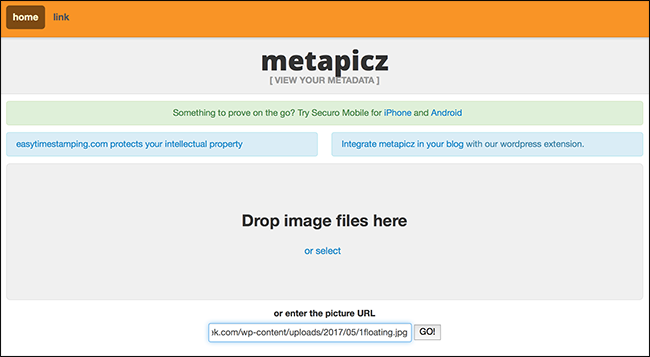
You’ll see all the metadata that’s embedded in the image. If it’s there, the copyright data will be front and center. You can see that—shockingly—I’m the copyright holder for the image I’m using as an example.
您将看到图像中嵌入的所有元数据。 如果存在,则版权数据将位于最前面和最中心。 您可以震惊地看到,我是我作为示例使用的图像的版权所有者。
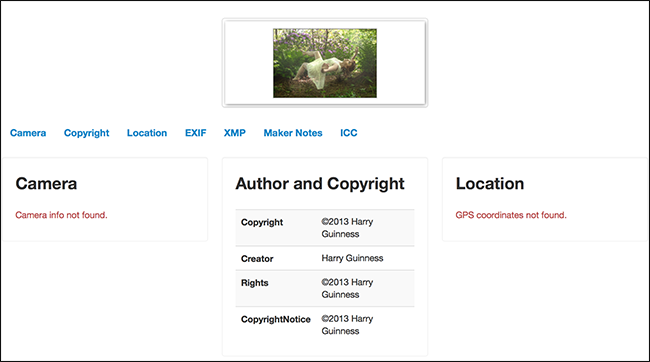
If the copyright data doesn’t line up with the page where it’s posted, then there’s a good chance it’s being used without permission. For example, I hold the copyright to most of the photos in my articles on How-To Geek, but since I write here and have an author page here, everything is probably above board. If, on the other hand, you find images with my copyright information embedded where there’s no connection between me and the site, then things probably aren’t on the level.
如果版权数据与发布的页面不一致,那么很有可能未经许可就使用了版权数据。 例如,我在《 How-To Geek》的文章中拥有大多数照片的版权,但是由于我在这里写文章并在此处拥有一个作者页面,因此一切可能都超出了我的范围。 另一方面,如果在我和网站之间没有任何联系的情况下找到嵌入了我的版权信息的图像,则可能是问题所在。
Now, this isn’t a perfect method. It’s simple to strip out any metadata, including copyright information. It might also not be embedded in the first place. That’s the case with more than a few of my images on the site. Just because it’s not there, though, doesn’t mean that the image isn’t copyrighted.
现在,这不是一个完美的方法。 剥离所有元数据(包括版权信息)很简单。 它可能也不会一开始就被嵌入。 网站上有很多我的图片就是这种情况。 但是,仅仅因为它不存在,并不意味着该图像没有版权。
With all that said, I do find it funny that when my photos are taken from How-To Geek and end up on other sites, the copyright information is often left embedded.
话虽这么说,我的确很有趣,当我的照片是从How-To Geek拍摄并出现在其他网站上时,版权信息通常会被嵌入。
使用反向图像搜索 (Use Reverse Image Search)
The other good way to find out if a photo has been stolen is to use a reverse image search and a bit of detective work.
找出照片是否被盗的另一种好方法是使用反向图像搜索和一些侦探工作。
There are a few different reverse image sites out there. Google’s is the most well known, but Bing also has a good one. TinEye is interesting, and their matching technology is better than most. Unfortunately, I’ve found they don’t crawl a lot of the sites where my images end up, so their database is far less complete. For this article, I’m going to use Google.
有一些不同的反向图像站点。 Google最为人所知,但Bing也有一个很好的例子。 TinEye很有趣,它们的匹配技术也比大多数更好。 不幸的是,我发现他们并没有抓取我的图像最终到达的许多站点,因此它们的数据库还不够完善。 对于本文,我将使用Google。
On the Google Images page click the little camera icon in the search bar.
在Google图片页面上,点击搜索栏中的小相机图标。
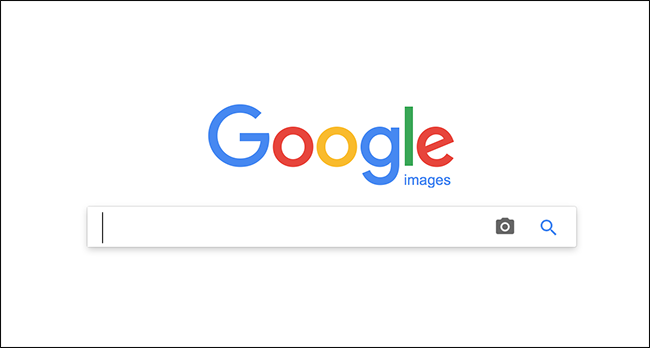
Either paste in a URL or upload a file from your computer.
粘贴URL或从计算机上载文件。
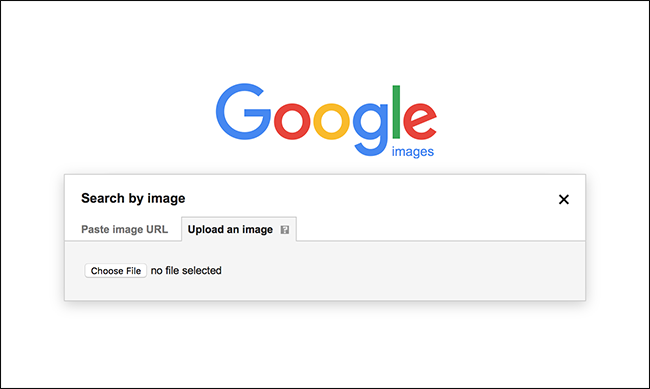
Google will show you what it thinks the image is as well as some visually similar photos, but what we’re interested in is the “Pages That Include Matching Images” section.
Google会向您显示它认为图像的外观以及一些视觉上相似的照片,但我们感兴趣的是“包含匹配图像的页面”部分。
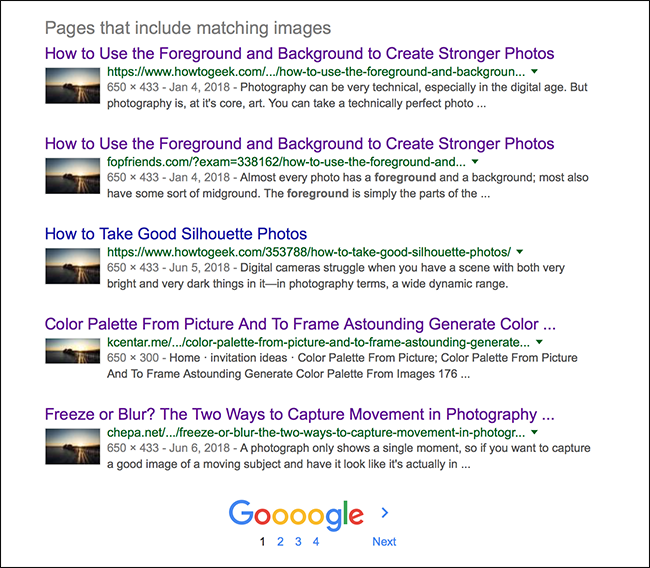
You can see there are two How-To Geek links—totally authorized uses of my photo—and three non-How-To Geek pages. They’re all using this photo of mine illegally.
您可以看到有两个How-To Geek链接(完全授权使用我的照片)和三个非How-To Geek页面。 他们都在非法使用我的这张照片。
This is where the detective work comes into play. Since we’re using a photo we know has been stolen from How-To Geek, it’s easy to guess which the original is. If we didn’t already know this, we’d need to go through each site and check things like:
这是侦探工作发挥作用的地方。 由于我们使用的是我们知道的照片,因此我们知道该照片是从How-To Geek被盗的,因此很容易猜出是哪张照片。 如果我们还不知道这一点,则需要遍历每个站点并检查以下内容:
- Which article was posted first; it’s not a perfect test, but it’s one of the best. 首先发表哪篇文章; 这不是一个完美的测试,但这是最好的测试之一。
- Which site seems the most reputable. It’s another imperfect, but an often reliable test. 哪个网站最有名。 这是另一个不完善的测试,但通常是可靠的测试。
- Where the image is available in the highest resolution since it’s more likely to be the original. 图像分辨率最高的位置,因为它更有可能是原始图像。
- If there is a color version or other less edited version, it’s probably the original. Removing text from a photo or adding color to a black and white image is a lot of work. 如果有彩色版本或其他较少编辑的版本,则可能是原始版本。 从照片中删除文本或为黑白图像添加颜色是很多工作。
- Does the image appear in any photographer’s portfolio websites? While some photographers steal photos and claim them as their own, it’s not as common as random people stealing from photographers’ websites. 该图像是否出现在任何摄影师的作品集网站中? 尽管有些摄影师偷了照片并声称拥有自己的照片,但不像随机的人从摄影师的网站上偷照片那样普遍。
It’s become increasingly common for people stealing images—at least those who know what they’re doing—to make some edits to the images they take. I tested Google’s reverse image search to see how it did at detecting some simple edits and, to be honest, it blew me away.
对于窃取图像的人们(至少是那些知道自己在做什么的人)进行编辑的图像,变得越来越普遍。 我测试了Google的反向图片搜索,以了解它在检测到一些简单编辑后的效果,说实话,它让我大吃一惊。
I tested:
我测试了:
- A black and white version of the photo. 照片的黑白版本。
- A cropped version of the photo. 照片的裁剪版本。
- A cropped black and white version of the photo. 照片的黑白版本。
- A cropped version of the photo with text added. 带有文字的照片的裁剪版本。
- A cropped high contrast version of the photo. 裁剪后的高对比度照片。
- A cropped high contrast version of the photos with the colors changed. 裁剪后的高对比度版本照片的颜色发生了变化。
- A cropped, reversed version of the photo. 裁剪后的照片反转版本。

Google only failed on the very last one. It didn’t matter that I changed the colors or added text, it still returned the same results. That’s pretty incredible. Someone would really have to make an effort to change an image quite a bit for Google not to catch it.
Google仅在最后一个失败了。 更改颜色或添加文本都没关系,它仍然返回相同的结果。 太不可思议了。 确实有人必须努力改变图像,以使Google不能捕获它。
Image theft—or more specifically, images being used without appropriate permission—is a big problem online. It can also be an expensive one. If you use someone’s photo without their permission, you could be on the hook for thousands of dollars. Just be careful when you’re using images you haven’t paid a stock photo site for or when you don’t know exactly who took them.
图像盗窃(或更具体地说,未经适当许可而使用图像)是在线上的大问题。 它也可能是昂贵的。 如果未经他人许可而使用某人的照片,则可能要花上数千美元。 请注意,当您使用尚未为股票照片网站付款的图像时,或者当您不知道确切地由谁拍摄时。
翻译自: https://www.howtogeek.com/362946/how-to-check-if-a-photo-is-stolen/
staem被盗





















 2962
2962











 被折叠的 条评论
为什么被折叠?
被折叠的 条评论
为什么被折叠?








